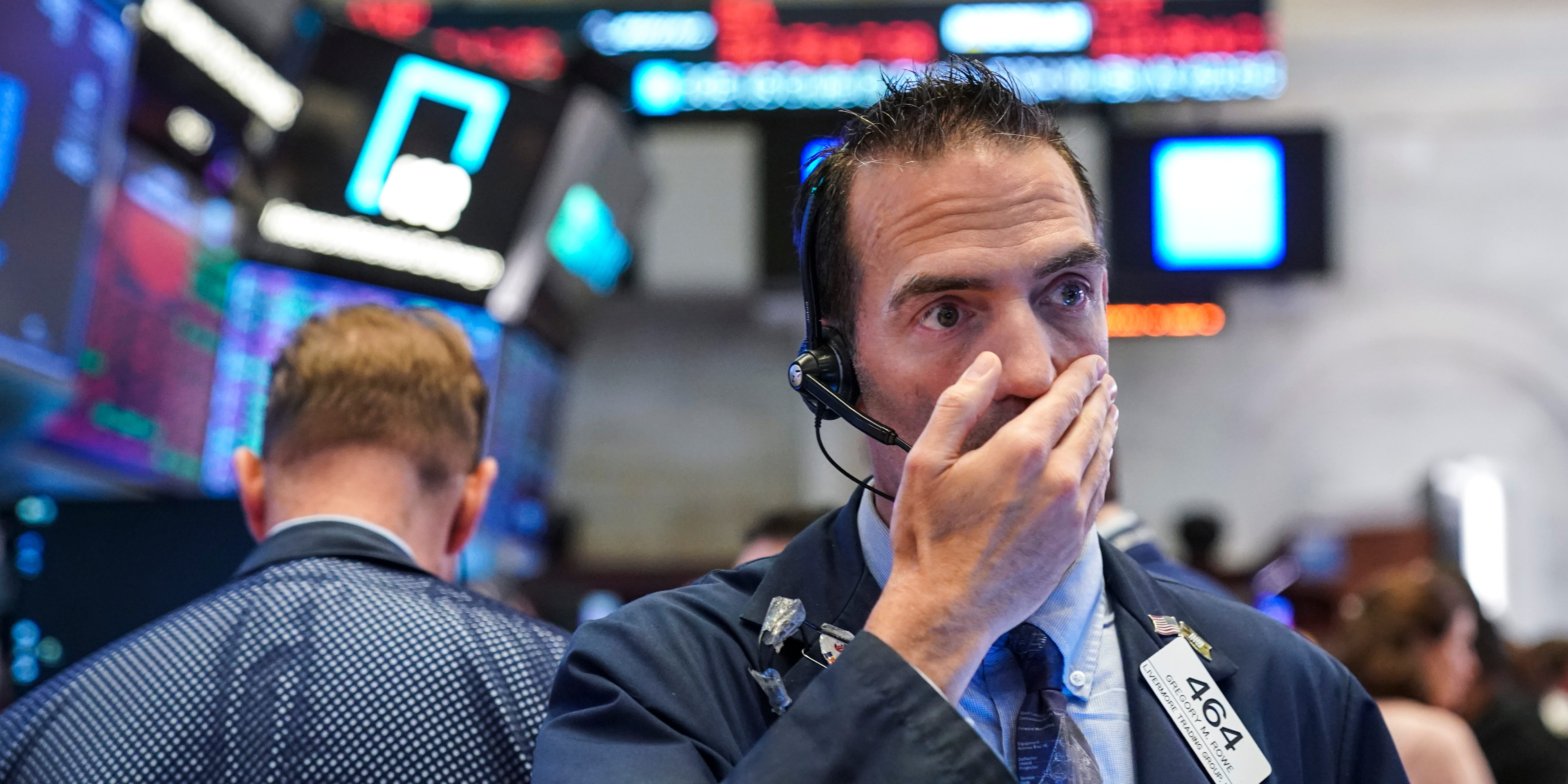The stock market isn’t going to recover from its recent rout soon as three headwinds remain, according to JPMorgan.The bank highlighted that valuations are still too high, and interest rates are too restrictive.Investors have entered “extreme fear” mode as interest rates surge to a new cycle-high. Loading Something is loading.
Thanks for signing up!
Access your favorite topics in a personalized feed while you’re on the go.
Pain in the stock market is unlikely to end anytime soon as investors grapple with three ongoing headwinds, according to a Wednesday note from JPMorgan.
The bank highlighted that as bond yields surge to levels not seen since 2007, it will be difficult for stocks to mount a recovery in an environment that has parallels to 2008.
“Our cautious outlook will likely remain in place as long as interest rates remain deeply restrictive, valuations expensive, and the overhang of geopolitical risks persists,” JPMorgan’s Marko Kolanovic said. “Since the start of the year, the headwinds for markets are stronger and tailwinds weaker.”
With the 10-year yield hitting a new cycle-high above 4.80% on Tuesday, the challenge for stocks, as well as the broader economy, is greater, especially as investors finally have an alternative to buying equities.
“Lags in the impact of high rates are longer this time, but we believe most of the negative effects are still to come,” Kolanovic said. “Delinquencies in consumer loans and corporate bankruptcies are starting to move higher, and this trend is likely to continue absent a cut in rates.”
Also not helping the situation for risk assets is elevated oil prices, which have surged about 30% over the past three months.
“While we are not saying that the situation now is the same as in 2007 to 2008, there are enough similarities to warrant caution,” Kolanovic said.
One of those similarities between today and 2008 is investors entering panic mode, according to the most recent readings of sentiment indicators. The CNN Fear & Greed Index has entered “extreme fear” territory over the past week as investors fret about high interest rates. The AAII weekly investor sentiment survey has also seen a steady decline in bullish responses over the past month to below average levels.
“What we find remarkable is that going into the crisis in 2007, investors were discussing the exact same topics as today: Fed pause, consumer resiliency, soft landing, strong jobs, etc.,” Kolanovic said.
And it’s all of those similarities that leads Kolanovic to maintain its year-end S&P 500 price target of 4,200, which is about 1% lower from current levels. And until the headwinds clear, Kolanovic doesn’t expect to upgrade his price target anytime soon.
